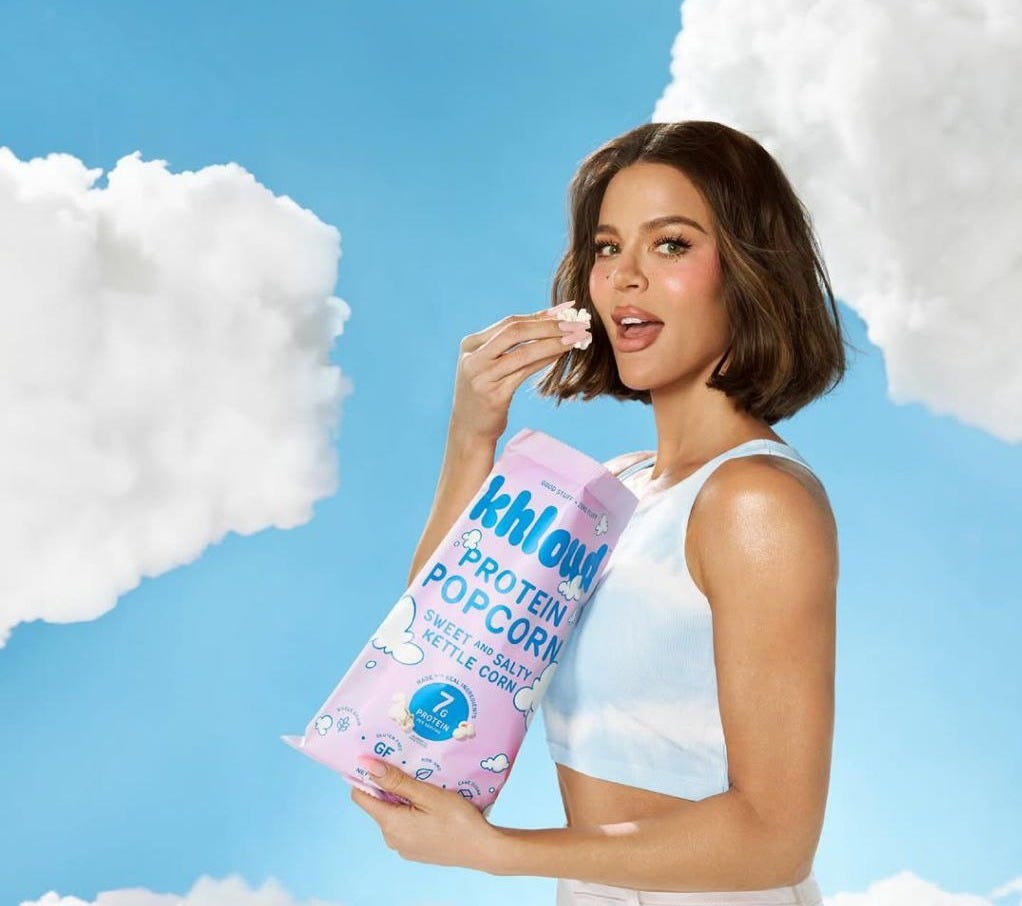Khloé Kardashian’s Khloud Popcorn: A Beauty Strategy in a Food Market
[Sponsored Ad]
I’ve been using Ketone-IQ to sharpen my mental focus, sustain clean energy, and keep my brain firing on all cylinders throughout the day and after speaking with the team, they’ve agreed to give you an exclusive 30% off your order: Grab yours here.
Khloé Kardashian recently launched Khloud Protein Popcorn, a bold leap from fashion and beauty into functional snacking. But is this move a stroke of genius or is the strategy that worked in beauty about to fall short in food?
The Wealth and Strategy Behind the Brand
With a net worth estimated at $65 million, Khloé isn’t new to building wealth through brand ventures. From co-founding Good American, which pulled in over $200 million in 2022, Khloé’s business empire thrives on three things: audience, aesthetic, and alignment with her personal image.
Now, she’s betting on protein popcorn. Khloud is backed by powerhouse investors like Serena Ventures and WME, and it’s launching big with retail distribution in Target and direct-to-consumer online.
Khloud is high-protein popcorn (7 grams per serving) infused with a proprietary dairy-based blend called “Khloud Dust.” Flavors include:
Olive Oil & Sea Salt
White Cheddar
Sweet & Salty Kettle Corn
It’s marketed to health-conscious snackers, tying perfectly into Khloé’s fitness-driven persona.
But can the same strategies that worked in denim and contour kits win in the pantry aisle?
The Market Context
The global popcorn market is expected to reach $18.8 billion by 2031, growing at a 5.3% CAGR. Meanwhile, the demand for functional snacks those that claim to support wellness, performance, or nutrition is exploding.
On paper, Khloud is perfectly timed. It taps into two growth categories: popcorn and protein.
But food is not fashion. Consumers aren’t just buying a vibe. They’re buying something they put in their bodies.
Is This a Recycled Strategy?
If this feels familiar, it’s because it is. A few ingredients from Khloé’s past:
Strong personal branding
Celebrity-backed investment
Social-first launch
Hyper-visual aesthetic
Lifestyle positioning
It’s the Good American formula, refitted for a different aisle.
But here’s the rub: In fashion and beauty, perception is the product. In food, it’s just the packaging.
Food has to win on taste, trust, and texture, not just tone. And this time, the protein source is dairy-based, which quietly sidelines some of the most vocal wellness consumers: vegans and the dairy-intolerant.
Is that a strategic misstep or a calculated sacrifice?
Lessons for Entrepreneurs
This launch is a masterclass in cross-industry brand strategy, with a few crucial reminders:
Strategy is transportable, but context is not. What works in fashion may flop in food if not retooled.
Health claims need backup. Consumers expect taste, texture, and transparency.
Exclusion is a risk. A dairy-based formula narrows the audience. A plant-based version could future-proof the brand.
Speed-to-scale still wins. Launching in Target gives Khloud instant reach but only sustained performance will secure shelf space.
Khloud will live or die by its ability to deliver on function, not just flair.
Final Thoughts
This isn’t a bad idea it’s a bold one.
Khloé is taking a proven brand playbook and applying it to a category where image alone isn’t enough.
In fashion, she shaped the narrative. In food, the product has to speak for itself.
Khloud will either evolve into a legacy snack brand or serve as a cautionary tale in celebrity branding where strategy without substance meets the limits of aesthetic power.
For now, one thing is clear:
Khloé isn’t just launching a snack. She’s testing whether celebrity credibility can become edible.




Interesting! I’d love to know how succesful the business actually is